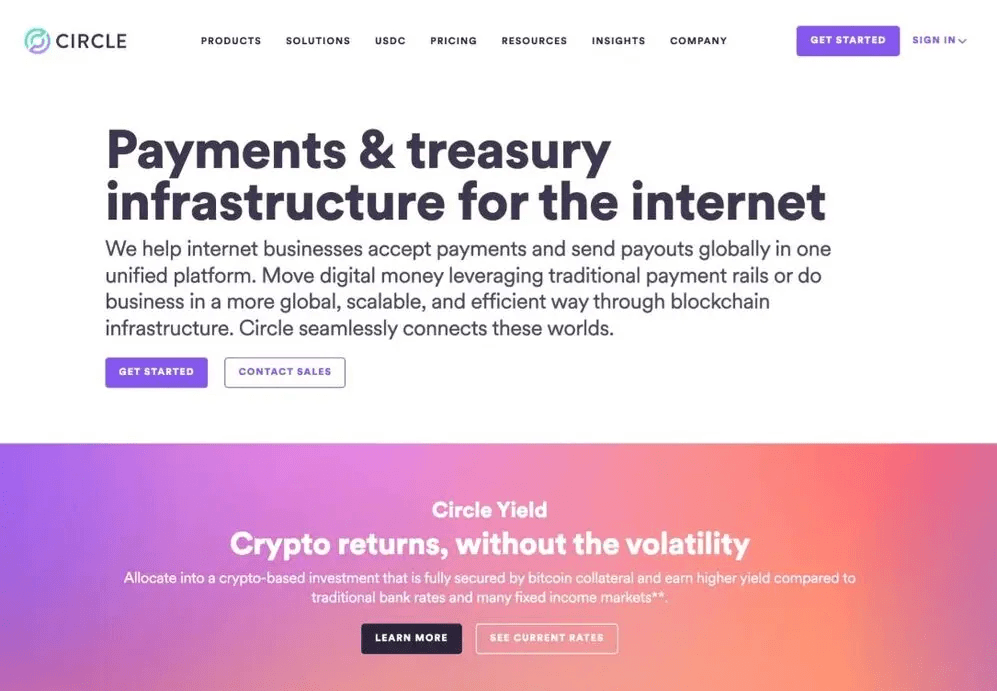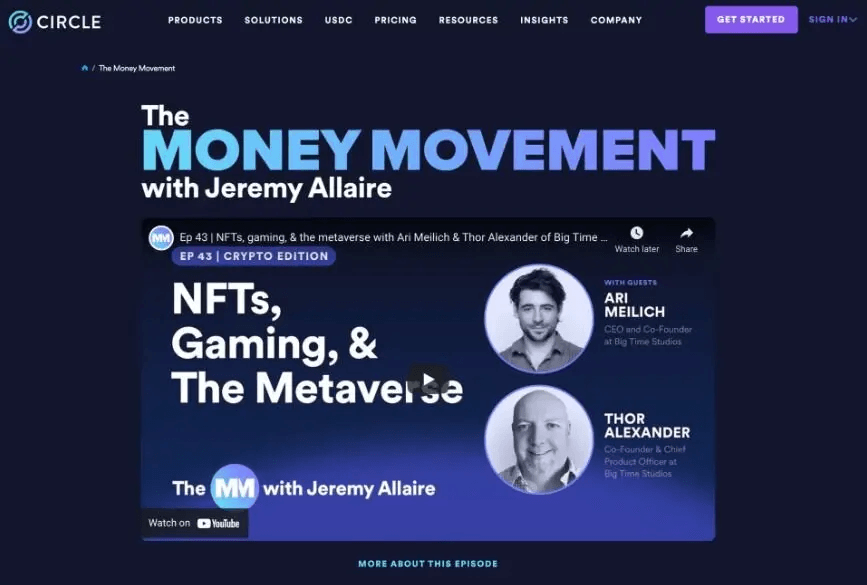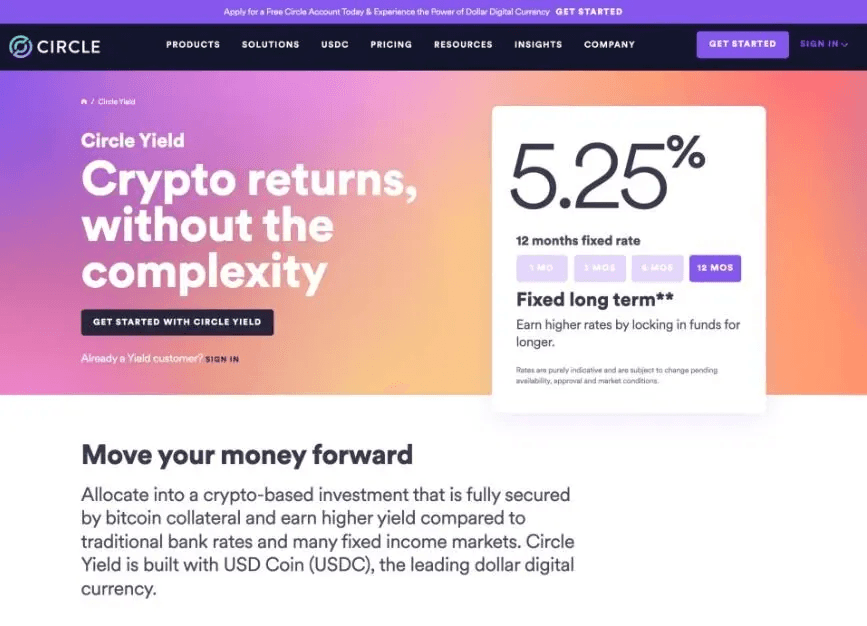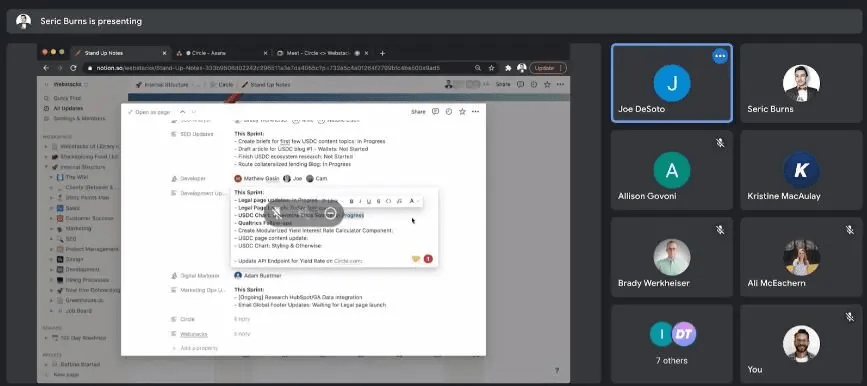Information moves fast in the crypto industry, and marketing teams at blockchain-based payment infrastructure companies like Circle need to move with confidence and speed.
Launched in 2013, Circle is a global crypto finance company that offers a B2B payments technology platform and enables businesses to hold, send, and receive digital currencies.
When Circle’s Creative Director, Kristine MacAulay was spearheading a brand refresh, they engaged Webstacks to develop a scalable, responsive website that empowered content creators and leveraged HubSpot's Enterprise Growth Suite.
Developing a Next-Generation Website that Moves Faster than Stablecoins

Before our engagement, Circle's approach to publishing new content was manual, fragmented, time-consuming, and depended on their engineering team's resources to speed up the process.
A common challenge facing crypto and high-growth SaaS companies is balancing engineering resources between product development and marketing operations.
As a HubSpot solutions partner, we extend the capacity of the marketing department and allow engineers to focus on building first-in-class products.
How HubSpot Became the Home of Circle's Marketing Website
Together, we launched a brand new website to drive traffic, engage prospects, generate leads, and re-engage existing customers.
HubSpot is now the home of Circle's marketing website and a global content platform for its blog posts, podcasts, and case studies.
Working with Speed
As a HubSpot solutions partner, we pride ourselves on maintaining pace with the company we keep.
We created a detailed plan of action for migrating Circle’s disparate content and phased out the website development project into a 90-day timeline with clearly defined deliverables and goals.
In just three weeks, we migrated all of Circle’s data including over 20 product pages, more than 250 blog posts, and 100+ legal pages to HubSpot’s Content Management Hub.
Migrating a Blog from Medium to HubSpot
Migrating a blog requires careful planning and pinpoint precision to ensure there is no loss in organic rankings and no disruption to the user experience.
An important step is mapping out 301 redirects to send traffic going to the old pages and redirecting them to the new pages. As a result, our team identified an opportunity to simplify blog URLs and introduced a new URL structure to the Circle blog.
Improving URL structures
Circle was hosting their blog on Medium as a subdomain on their website. However, the URL structure included the publish year, month, and day which is impractical for two reasons:
- It unnecessarily lengthens the URL.
- Updating URLs risks broken links and internal 301s.
A change to the URL structure risks losing your position on the search engine results page.
Fortunately, HubSpot’s URL redirects tool made setting up 301 redirects a breeze by using variables to dynamically redirect traffic to the new blog.
After ensuring the technical infrastructures of the new website were consistent with their previous build, we ported over page titles and meta descriptions and optimized them for keywords.
Designing a Responsive HubSpot Website
Circle wanted to create a website with a modular design system that leverages reusable components, or building blocks, to help them scale faster with improved flexibility.
We started with a library of fewer than 20 components but quickly ramped up as the site began to grow. The collection of HubSpot modules can be dragged and dropped into page templates and emails to build content.
This drag-and-drop flexibility of custom components gives Circle’s marketing team the autonomy to build, optimize, and deploy new marketing campaigns without the need for engineering support.
Circle wished to ramp up its content production with the release of its new podcast, The Money Movement.

Together we launched an interactive Podcast Hub that provides users a single channel to engage, share, and consume The Money Movement content.
Using HubSpot’s Database Management tool (HubDB), we dynamically generated new podcast pages and audio transcripts for an immersive digital experience.
The Results

Today, Circle handles its inbound marketing efforts in HubSpot while dramatically reducing time to market - a must in the crypto industry.
For Circle, the new website has delivered on all its promises, consolidating its marketing initiatives into a lean, efficient CMS with staggering results.
By heeding Circle’s migration concerns, we incurred a 0% loss in organic traffic, increased organic traffic by 21%, and realized a 500% increase in product demos following the new website launch.
Our embedded partnership with HubSpot has been the driving force behind the success of the Circle project. We've helped Circle keep up with the velocity of the blockchain industry by launching a high-performance website.
Supporting a Growing Number of Dependent Business Units
Because of the quick-moving and shifting landscape of the crypto industry, for Circle and its financial products to operate smoothly and successfully, it needs the support of two additional business units: Centre and Verite.
Additional Marketing Priorities
Because of the important roles Centre and Verite play, Circle needed to put extra marketing muscle behind the purpose of the partnership.
Making Room for Centre & Verite Marketing Projects
By introducing an increased load of website projects, Circle needed to be able to quickly deprioritize, pivot, and reprioritize existing marketing website projects around Centre’s and Verite’s upcoming marketing needs. These important projects included:
By introducing an increased load of website projects, Circle needed to be able to quickly deprioritize, pivot, and reprioritize existing marketing website projects around Centre’s and Verite’s upcoming marketing needs. These important projects included:
- A new Verite homepage, Partners page, and FAQ page
- A new Center homepage
- A “Circle & Verite” landing page
- A HubSpot dev-portal reskin
- A major Circle global navigation update
An Integrated, Agile & Flexible Website Product Team
The main strength of an integrated and agile website product team—consisting of designers, developers, marketers, and a project manager—is how quickly it can pivot around the needs of multi-stakeholder ecosystems like Circle’s.
Maintaining Agility & Speed Under Load
Five factors that allow Circle to maintain speed and agility throughout the deployment of these new marketing projects.
- One-week sprints
- Collaborative sprint planning sessions
- Brief daily update check-ins
- Scalable website product teams
- Internal retrospective meetings
One-week sprints
To accommodate Circle’s (and its industry’s) fast-moving nature, we instituted one-week long “sprints”—short, repeatable phases, typically one to four weeks long—during which Webstacks designers and developers collaboratively work on a stakeholder-aligned list of tasks.
These short sprints provide a flexible environment for quick project deployment, learning, reprioritization, and pivots—elements designed to handle the introduction of new tasks (like Centre’s and Verite’s) at a moment’s notice.
Collaborative sprint planning sessions
Each one-week sprint was preceded by a sprint planning session.
During these meetings, Circle brought to light the important Centre and Verite projects, educating Webstacks’ integrated design and development teams on each project’s needs and timelines. Honest discourse and rigorous debate—a.k.a creative abrasion—were the goals.
This allowed the designers and developers to discuss, ideate, collaborate, and consult on system capacities and project lift until the alignment was achieved and a new list of tasks was created for the following week’s sprint.
Naturally, with the introduction of Centre’s and Verite’s new projects, originally-planned Circle tasks (limited by the original agreement’s scope) needed to be deprioritized. After close team consideration, these tasks include:
- A project to refactor, clean up, and consolidate existing website components
- An update to Circle’s legal pages
- An update to Circle’s “OneTrust” cookies
Thanks to the flexibility afforded by the one-week sprints, Circle’s deprioritized tasks were immediately reprioritized upon completion of Centre and/or Verite projects, ensuring a quick and seamless transition back to originally planned projects.
Daily 15-min check-ins

In addition to weekly sprint planning meetings, we implemented 15-minute daily morning check-ins, led by a Webstacks project manager, allowing all stakeholders (design, development, and marketing management) to align on the week’s progress.
Blockers were discussed, needs assessed, and—if necessary and able—extra resources allocated were necessary to retain speed.
Rightsizing teamwork
The reality with fast-moving environments is that productive teamwork and collaboration are hard to achieve. Process optimization is iterative—especially with multiple stakeholders in the ring. Hence, it was eventually decided that daily check-ins were unnecessary. To preserve speed, we instead migrated to two weekly updates.
Scalable website product teams
With the scale of the newly introduced Centre and Verite projects continuing to grow, all stakeholders eventually agreed that more development muscle was needed—especially for the HubSpot dev-portal reskin project.
Receiving the go-ahead, Webstacks immediately added two more seasoned developers to the integrated development team, precluding delays that would have otherwise been caused if Circle hired a developer internally or searched for a freelancer.
With the introduction of two extra developers, Circle could now focus on marketing projects for all three partners simultaneously.
End-of-month internal retrospective meetings
We also implemented end-of-month internal retrospective meetings where Webstacks designers, developers, and the team project manager huddle and discuss the month’s wins, losses, lessons, and process optimizations.
These allow our teams to iteratively tighten processes around Circle’s needs by uncovering opportunities to further improve communication, collaboration, and speed-to-market across all Circle’s marketing initiatives.
Seamless Deployment of Centre & Verite Marketing Projects
Ultimately, agile process management involves small, iterative bursts of work built around constant collaboration and refinement toward the end goal of a superlative deliverable.
With all of the above elements in place, Webstacks can effectively field and quickly prioritize, pivot, and deploy new Centre and Verite projects (and if need be, additional stakeholder projects) that Circle brings to the table.
Thanks to our integrated and flexible website product teams, Circle’s multi-stakeholder marketing website can evolve and grow at the pace of its products without bothering those products’ developers.
Ultimately, agile process management involves small, iterative bursts of work built around constant collaboration and refinement toward the end goal of a superlative deliverable.
With all of the above elements in place, Webstacks can effectively field and quickly prioritize, pivot, and deploy new Centre and Verite projects (and if need be, additional stakeholder projects) that Circle brings to the table.
Ultimately, agile process management involves small, iterative bursts of work built around constant collaboration and refinement toward the end goal of a superlative deliverable.
With all of the above elements in place, Webstacks can effectively field and quickly prioritize, pivot, and deploy new Centre and Verite projects (and if need be, additional stakeholder projects) that Circle brings to the table.
Thanks to our integrated and flexible website product teams, Circle’s multi-stakeholder marketing website can evolve and grow at the pace of its products without bothering those products’ developers.
